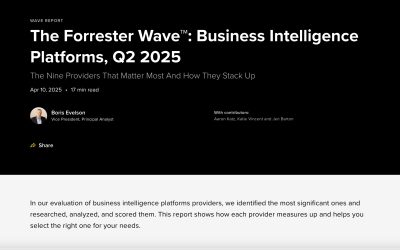How to choose the best data integration tool
Enterprises perform better when good data is leveraged for actionable knowledge, through robust analytics. Smooth data integration is necessary to extract critical insights from large amounts of company data, whether manually or using powerful automated technologies.
Effective data management is required since the amount of data within a business grows daily, and not all of it is meaningful; most of it consists of old, incomplete, compromised, and inconsistent data. Incorporating an automated data integration solution using a data integration tool is crucial to ensuring a business’s productivity.
When assessing business data integration platforms, it is essential to check if the solution offers a wide range of features that will simplify your data integration efforts. Based on typical use cases, the following characteristics of enterprise data integration software you should look for include the following:
Data synchronization in both directions
In many use cases, data must not only be changed at one location but also be updated in the original systems to preserve consistency and guarantee the data’s legitimacy across the enterprise network. The coordination between the networked devices should be precise and timely with the help of a data integration tool.
Automation of the process
Generally, when it comes to data integration, the task is ongoing. The data sets typically require numerous rounds of cleaning and transformation. The automation capabilities of a data integration system, such as trigger-based workflows, enable data scientists to automate tedious processes and streamline the integration procedure.

Excellent processing speed
In such sectors as banking and healthcare, handling and analyzing large volumes of data is essential and directly affects clients. A reliable integration solution should be able to collect and process data quickly and effectively, all while requiring minimal processing time. This capability can simplify corporate data integration chores and guarantee that data latency is kept to a bearable level.
Supports various data formats and sources
Enterprises operate with various data sources and formats. The best data integration software should enable and integrate data from several sources to deliver a comprehensive solution.
Quick data preview
Marketing experts need data analysis to extract helpful information and insights. They may use them to make intelligent business decisions after the data has been updated and cleaned. Data previews during the data integration process improve flexibility and insight into the state of the data. This feature is essential for data integration software to have.
Access at any time
The ability to access the integrated data from any device will be provided as part of a high-quality data integration tool. Remote workers, people on business vacations, field staff, and other participants outside the actual business location may need access to the integrated data. The data integration tool your organization chooses should provide the ability to access data from any location, given that the user sending the request is authorized to access the data. Consider a data integration solution that stores data in the cloud, making it accessible from various devices and locations.
Compatibility with other systems
You won’t get very far with a data integration plan that doesn’t consider the corporate solutions you already have in place. Think about the sources and destinations of your data, the storage methods you currently employ, and novel approaches to storing data that you can utilize. Your plan should get you a step closer to establishing a business environment free of silos that allows massive data migration and transformation. But having access to integrated data will only be useful if you can integrate the data into your organization’s existing systems.
Regulation adherence
Data regulations are constantly changing, and not complying with these regulations can be expensive. For many stakeholders, information management and security are big concerns, and making modifications after the fact can result in high development costs and economic interruption. Routinely review the data management regulations specific to your industry so you can make adjustments as needed. Your data governance policies may already take regulatory compliance into account, but reexamining your policies during the process of selecting a data integration tool enables you to address issues specific to data integration.

Data protection
Privacy violations and data breaches are other expensive problems for businesses, but with the appropriate strategy, you can control these risks. Your organization’s approach to data security during integration is influenced by your organization’s standard attack surfaces. Threats that are possible during the data integration process can be anticipated with a preemptive, multi-layered security strategy. Make sure you choose a data integration tool that supports the type of security measures your company utilizes so that you can ensure your data is integrated securely.
Required implementation expertise
Consider the assistance you’ll need to successfully implement a data integration solution throughout your business. You may need a team to handle crucial aspects of data integration, such as the basic design and implementation, but that’s only one factor. It is necessary to have access to enough resources and experts to implement a data integration plan. Some organizations hire external data consultants to aid them in the implementation of their data integration solution. Others have enough expertise in-house. Consider the abilities of your employees and weigh the cost of implementation as you choose your data integration tool. You may be able to decrease these costs by selecting a tool that is more intuitive for non-technical users.
Commercial value
To generate support for your approach, pinpoint important KPIs and the positive effects that successful data integration will have on the organization. You can discuss how data integration results in increased productivity and efficiency, as well as better data visibility and potential effects on the organization’s bottom line.
Scalability
Your data integration strategy needs to be scalable to accommodate current and upcoming data volumes. Connecting scaling to real-time events and automating the allocation of resources based on your implementation processes are two ways to manage at scale.
Check out some related resources:

Cloud Data Warehouse Usage Surges 116% as Industries Race to the Cloud

Domo Named a Strong Performer in The Forrester Wave™️: Business Intelligence Platforms, Q2 2025






